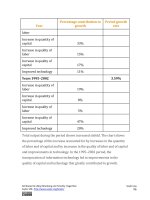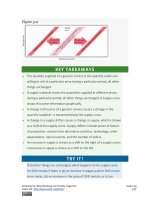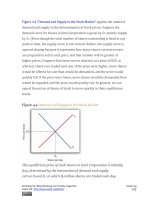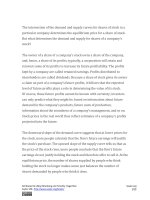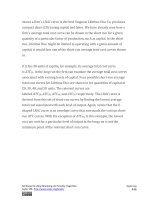Authors libby rittenberg 735
Bạn đang xem bản rút gọn của tài liệu. Xem và tải ngay bản đầy đủ của tài liệu tại đây (401.2 KB, 1 trang )
told Business Week. Mr. Marchant lost $2.9 million as a result of the
lockout.
Mr. Bettman and the owners were holding out for a “salary cap” that would
limit player salaries to 53% of team revenues. According to Mark Hyman
of Business Week, that would reduce average salaries in hockey from $1.8
million to $1.3 million. “We’re not going to play under a salary cap; we’re
dead set against it,” Brad Lucovich, defenseman for Dallas, told Business
Week. But the owners were similarly adamant. They were perfectly willing
to forego revenues from the season—and to avoid paying player salaries—
to establish a salary cap.
Were the owners being greedy? Or were the players at fault? For
economists, the notions of “greed” or “blame” were not the issue.
Economists assume that all individuals act in their own self-interest. In the
case of the hockey lockout, which eliminated the 2004–05 season, players
and owners were in a face-off in which a great deal of money was at stake.
Owners had tried to establish a cap in 1994; the resulting labor dispute
shut down half the season. Ultimately, the players prevailed and no caps
were imposed. The 2005 lockout ended in nearly the opposite way. In the
new contract, player salaries are capped and may not exceed 54% of
league revenues. [1] To most observers, it seemed that the team owners
had won this battle.
Revolutionary changes in the rules that govern relations between the
owners of sports teams and the players they hire have produced textbook
examples of the economic forces at work in the determination of wages in
imperfectly competitive markets. Markets for labor and other factors of
production can diverge from the conditions of perfect competition in
Attributed to Libby Rittenberg and Timothy Tregarthen
Saylor URL: />
Saylor.org
735
